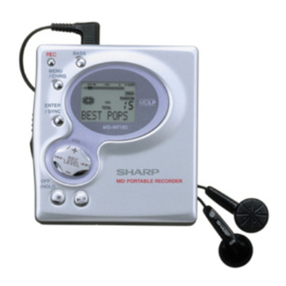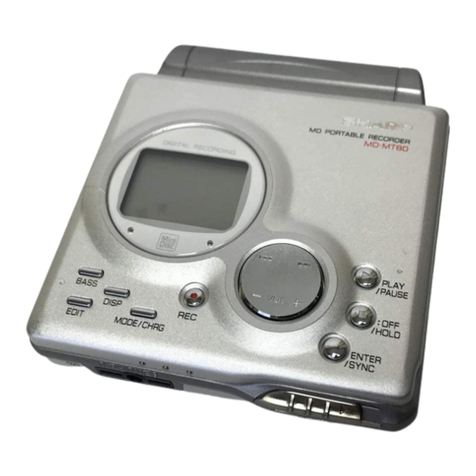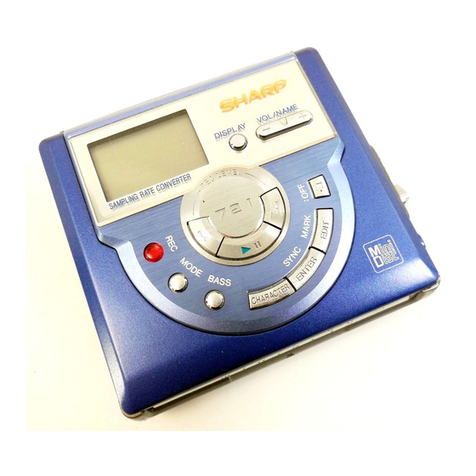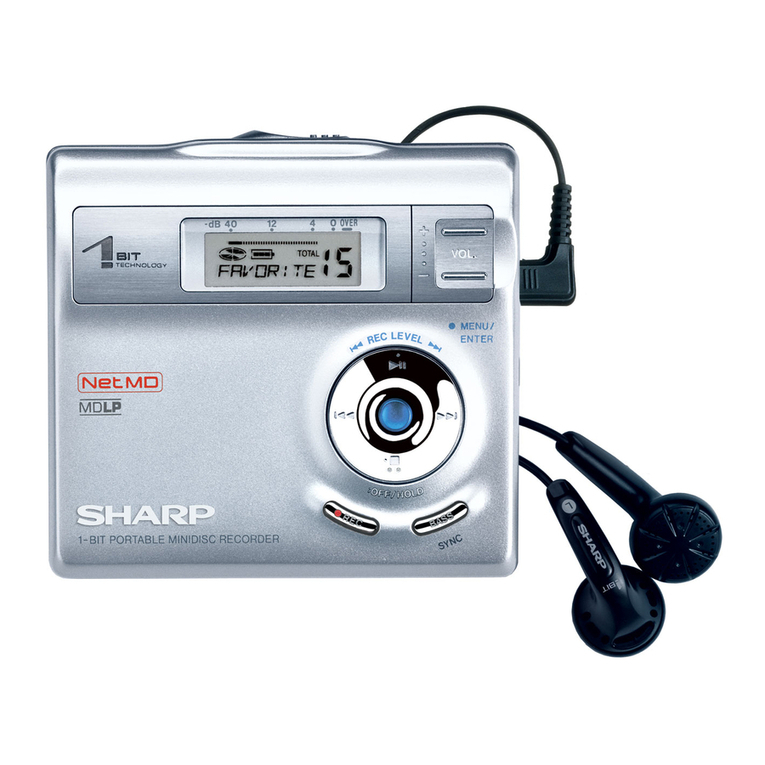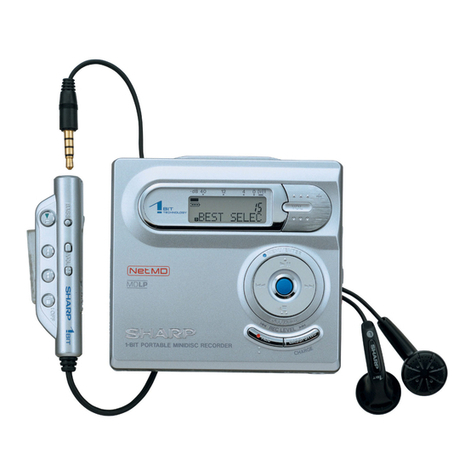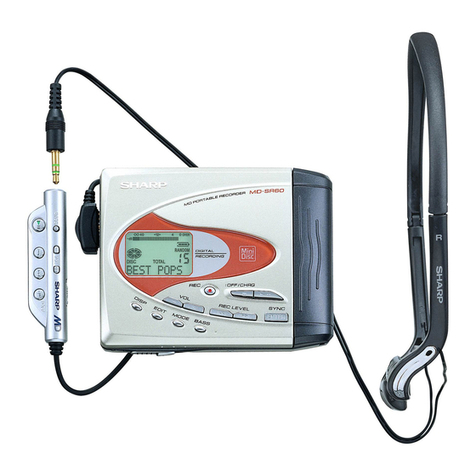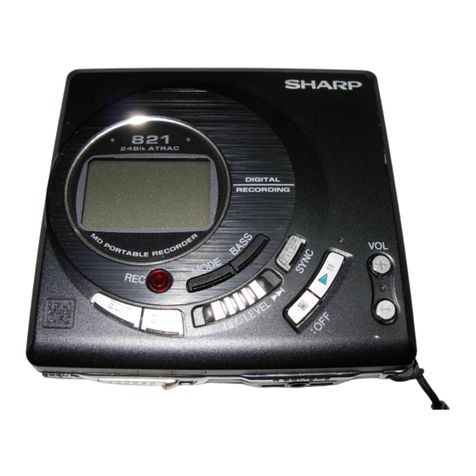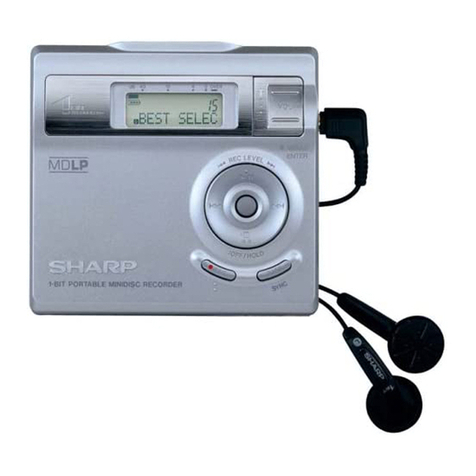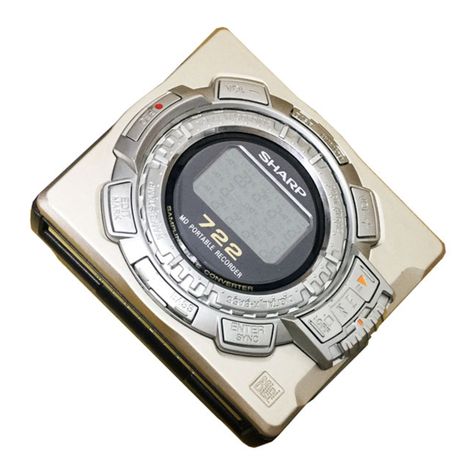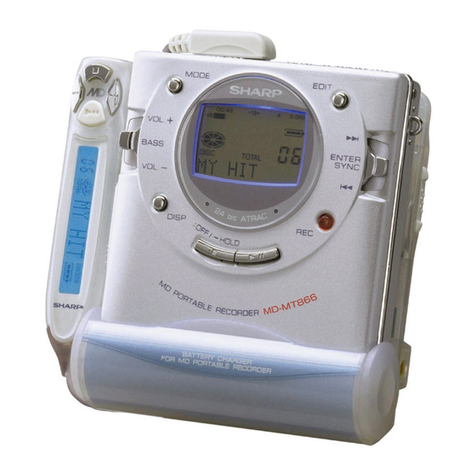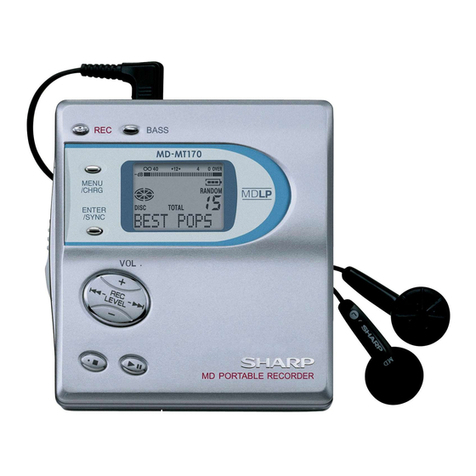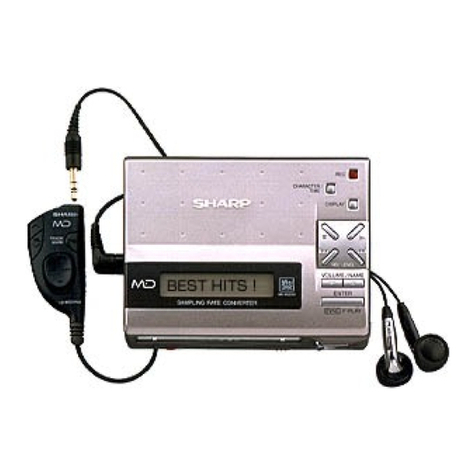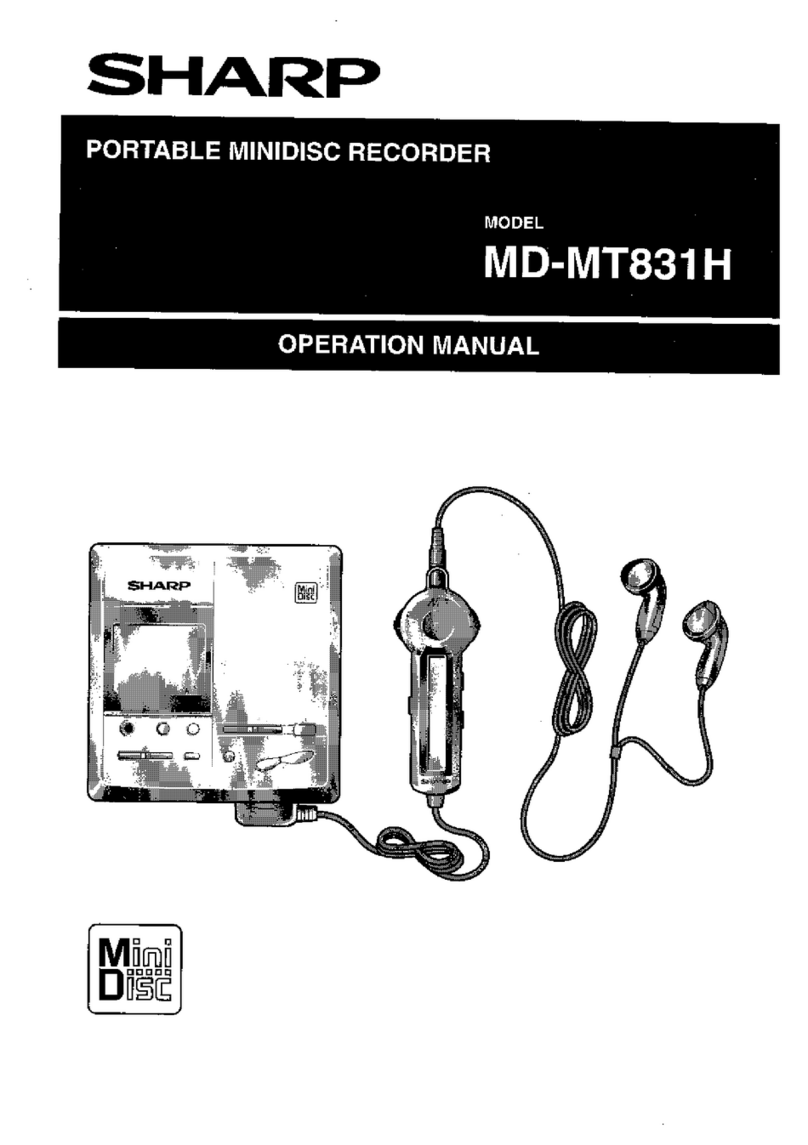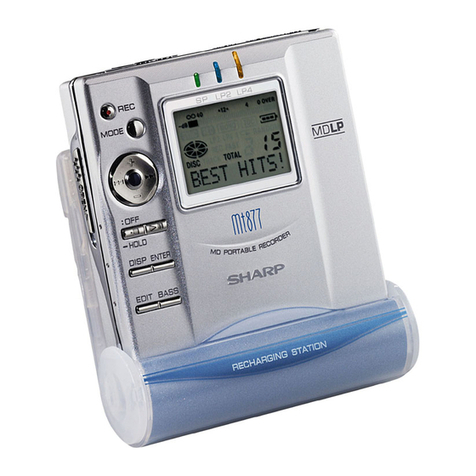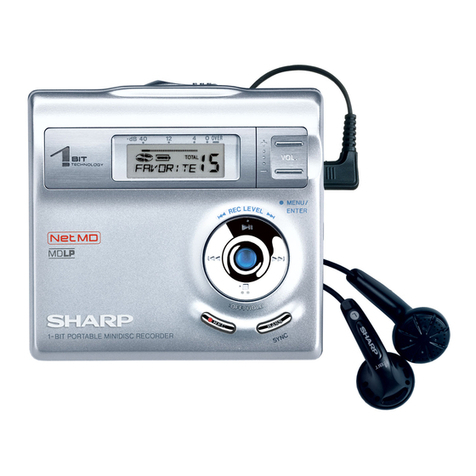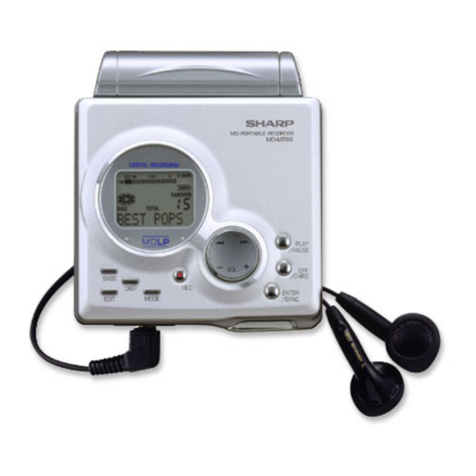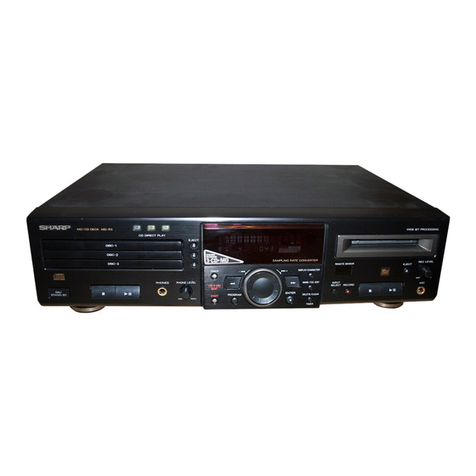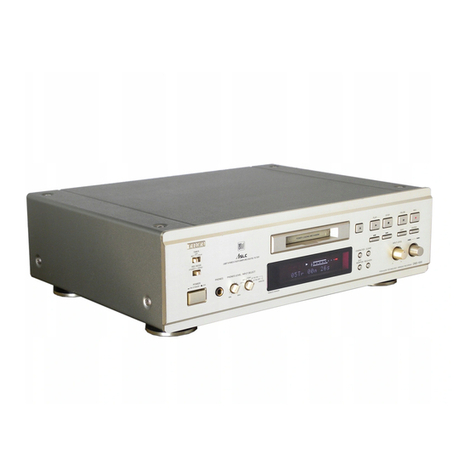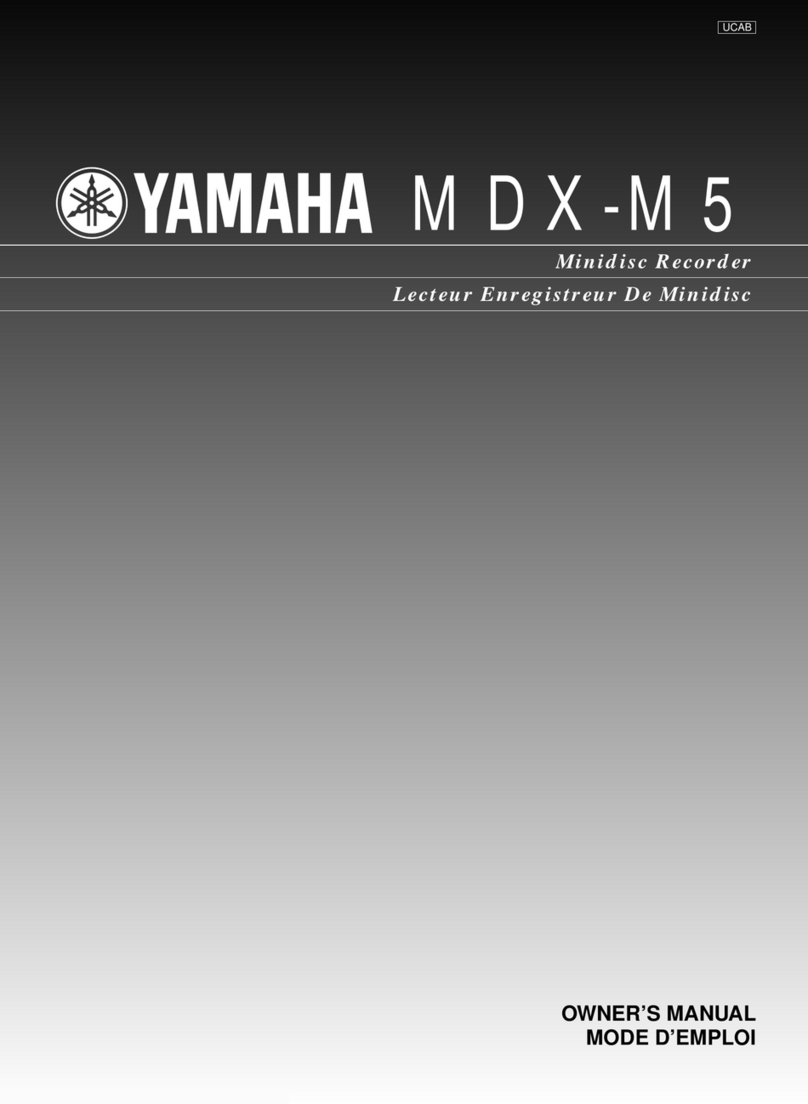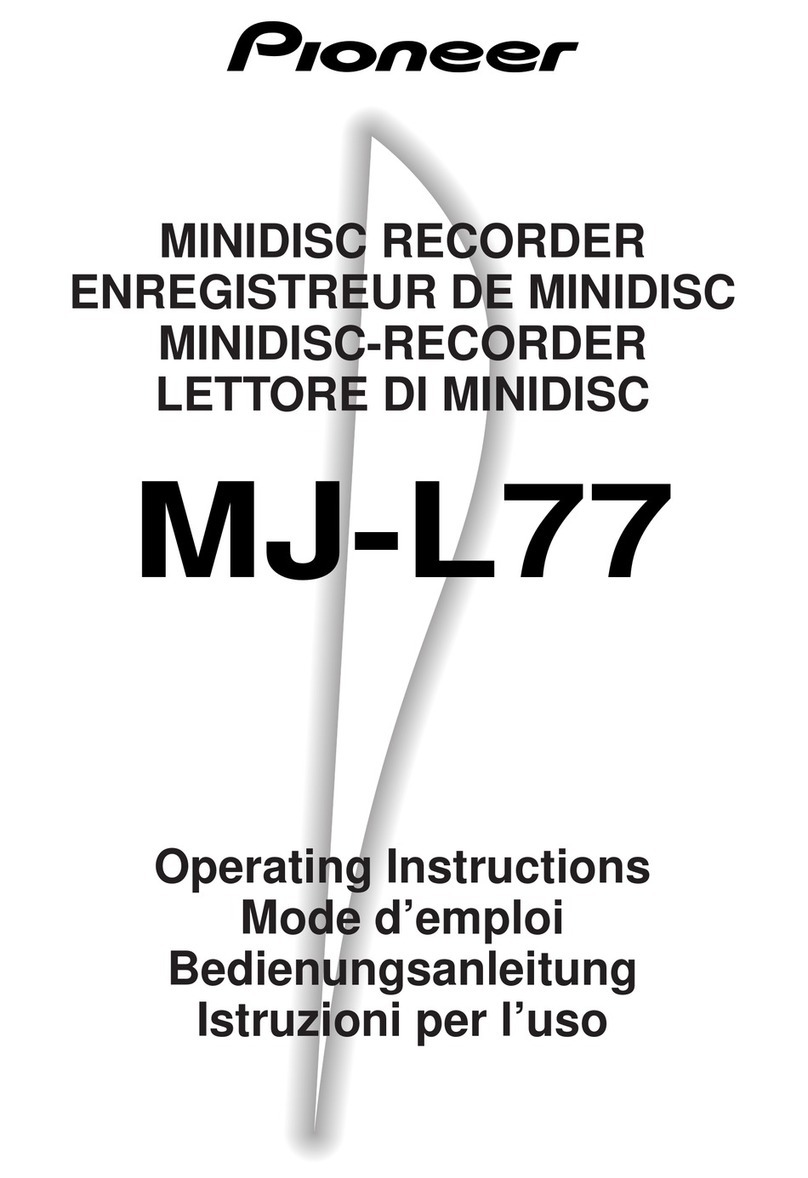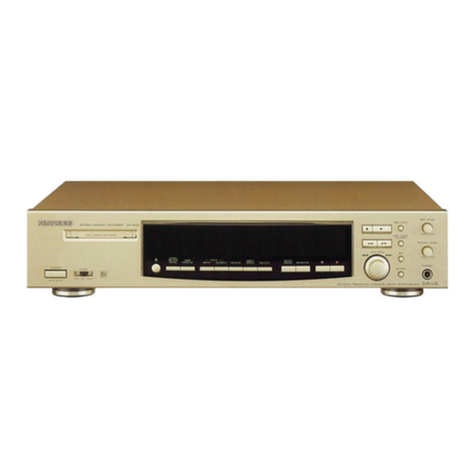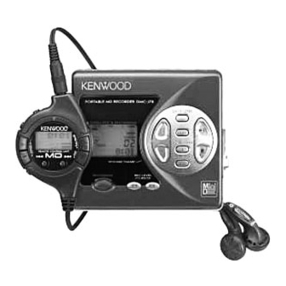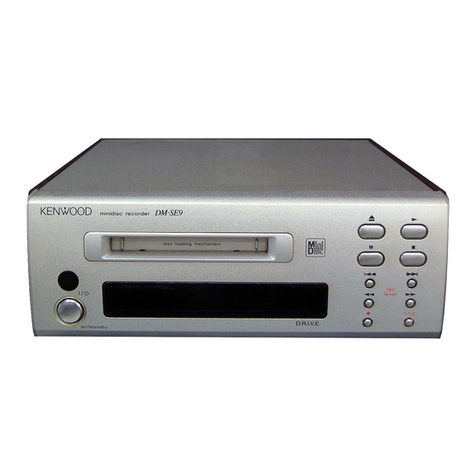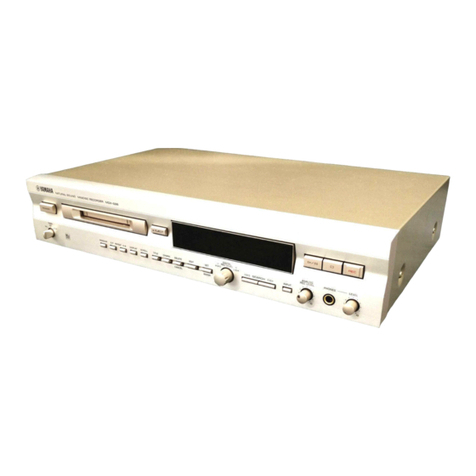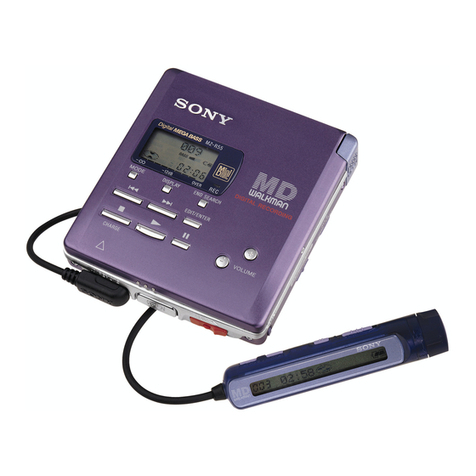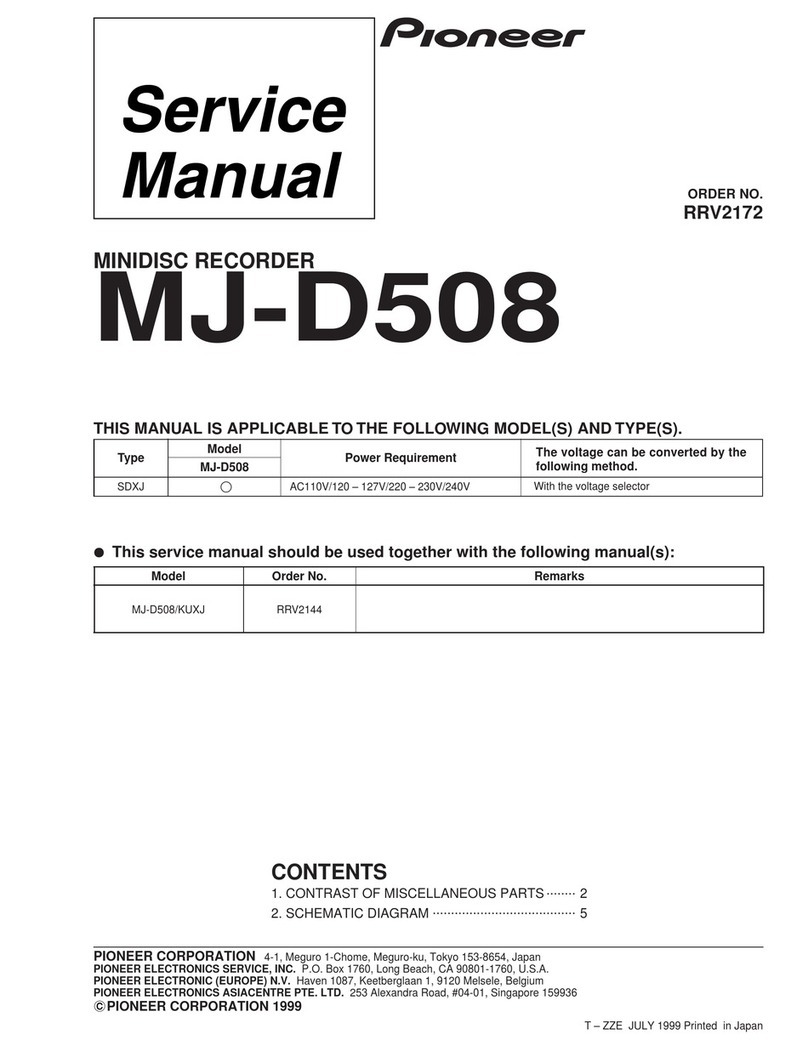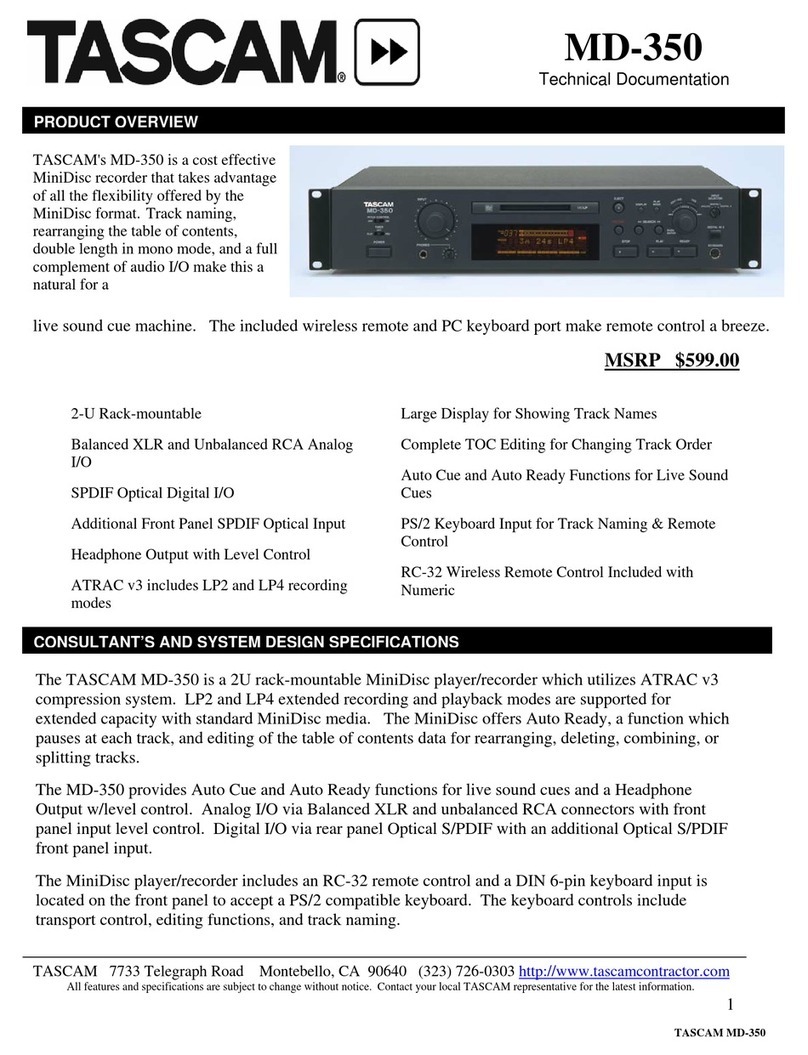
MD-SR60
– 6 –
Error Messages
ERROR MESSAGES
BATT EMPTY
BLANK MD
Can’t COPY
Can’t EDIT
Can’t READ (*)
Can’t REC
Can’t STAMP
Can’t WRITE
DEFECT
DISC FULL
Er-MD (**)
HOLD
LOCKED
NO DISC
MEANING
●The battery is not charged or there
is no battery in the compartment.
●Nothing is recorded.
●You tried to record from a copy pro-
hibited MiniDisc.
●A track cannot be edited.
●The disc data cannot be read be-
cause the disc is damaged.
●Recording cannot be performed cor-
rectly due to vibration or shock.
●Stamp function does not work.
●Cannot save the TOC information
correctly to a MiniDisc. (A large por-
tion of the disc has been damaged.)
●The disc is scratched.
●The disc is out of recording space.
●The microprocessor has reported a
system fault and the unit is out of or-
der.
●The unit is in the hold mode.
●You removed a MiniDisc while re-
cording or editing.
●A disc has not been loaded.
Number or symbol appears in (*) position.
REMEDY
●Charge the rechargeable battery or replace the alka-
line battery (or use the AC adaptor for power).
●Replace the disc with a recorded disc.
●Record using the analog cable.
●Change the stop position of the track and then edit it.
●Reload the disc.
●Replace it with another recorded disc.
●Re-record or replace it with another recordable disc.
●Check the number of tracks.
●Replace the disc with another recordable disc.
●If the sound you hear is not right, record again.
●Replace the disc with another recordable disc.
●Replace it with another recordable disc.
●To have it repaired, go to the distributor where you
purchased the unit.
●Return the HOLD switch to its original position.
●Turn off the power and remove the MiniDisc.
●Load a disc.
**:80=EEPROM READ ERROR
41=UTOC WRITE ERROR
*:f=focus ERROR r=TOC READ
a=SERVO ADJUST u=UTOC READ
s=TRACK SEARCH w=Data WRITE
ERROR MESSAGES
NO SIGNAL
PLAY MD
POWER ?
PROTECTED
SORRY
TEMP OVER
TOC FORM
(**)
TOC FULL
Tr. Protect
? DISC
MEANING
●
Poor connection of the digital cable.
●
No output signal comes out from the
connected unit to playback.
●
You recorded on a playback-only
disc.
●
Improper power is being supplied.
●
Thewriteprotection tab of a MiniDisc
is set to the protected position.
●
You tried to record on a playback-
only disc.
●
Since a track number is currently
being located or written to, the unit
cannot accept your command.
●
The temperature is too high.
●
There is an error in the recording
signal.
●
There is no space left for recording
character information (track names,
disc names, etc.).
●
The track has been protected from
being erased.
●
Adiscwhichcontains data other than
music was played.
●
There is an error in the signal re-
corded on the disc.
REMEDY
●
Connect the digital cable securely.
●
If the portable CD player has a function to prevent sound
skips, deactivate it.
●
Playback with the connected unit.
●
Replace it with a recordable disc.
●
Use one of the specified power sources.
●
Movethewriteprotectiontabback to its original position.
●
Replace it with a recordable MiniDisc.
●
Wait for a while and try the operation again.
●
Turn off the power, and wait for a while.
●
Erase all of the tracks, and then record again.
●
Replace it with another recordable disc.
●
Editthetrackwiththedeviceonwhichitwas recorded.
●
A disc which contains non-music data cannot be
played.
●
Replace it with another recorded disc.
Number or symbol appears in (*) position.

